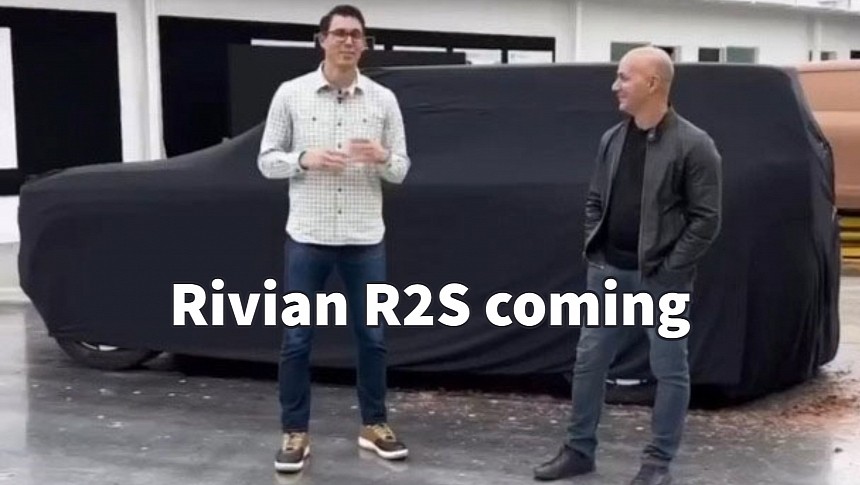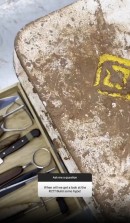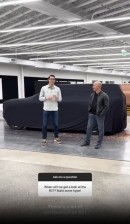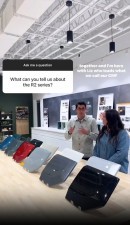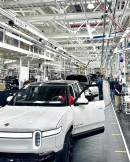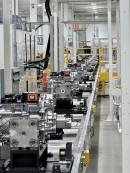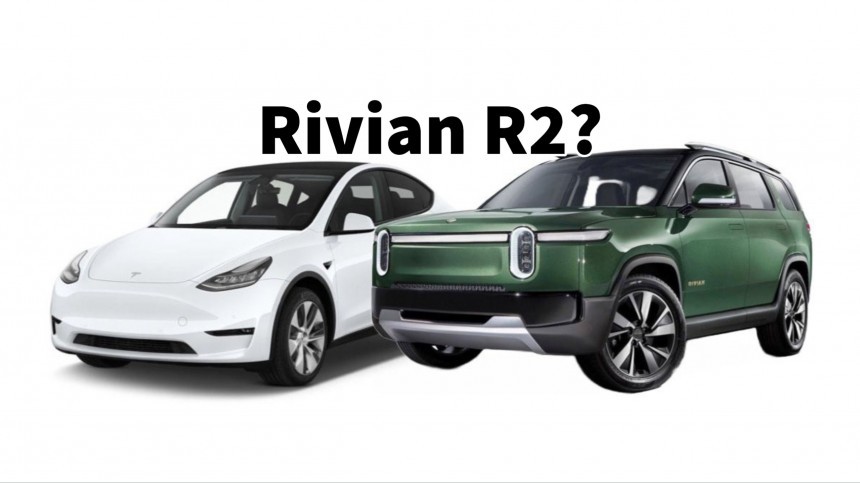Rivian delivered an impressive second-quarter earnings call that offered investors much-needed reassurance that the startup is heading in the right direction. The upcoming R2 platform was one of the most important topics discussed during the conference, and Rivian CEO RJ Scaringe did not disappoint. He shed more light on the upcoming R2 vehicles, from the architecture to the production timeline.
The R1T pickup truck and R1S SUV production picked up pace at the Rivian factory in Normal, Illinois, allowing the EV startup to impress investors during the second quarter earnings call. As we discovered last month, Rivian built 13,992 and delivered 12,640 vehicles from April 1 to June 30, exceeding expectations. Rivian also cut losses, although it's still burning through cash. The earnings call conference was defined by the company's plans and the upcoming R2 platform.
Rivian CEO RJ Scaringe confirmed that the first EV based on the smaller platform, the R2S compact crossover, will be unveiled in early 2024. Production will not start until 2026, considering that the new facility in Georgia will start production in three years. Rivian's CFO, Claire McDonough, already offered this information in June, but it's nice to see Rivian sticking to the plan. Still, RJ Scaringe added some juice to the R2 information pool by revealing details about the new vehicle architecture.
The most important aspect is that Rivian is following in Tesla's footsteps by switching to an updated network architecture, allowing the company to reduce the number of electronic control units (ECUs) by 60% and the wiring harness length by 25%. To do that, Rivian intends to develop in-house specialized components instead of using generic off-the-shelf parts. This way, instead of having separate ECUs for each vehicle function (for instance, for powertrain, suspension, and so on), Rivian will consolidate them and tie them to vehicle zones (think rear, front, and middle ECUs).
These optimizations will allow a massive cost reduction, which Scaringe estimates to be "thousands of dollars in savings per vehicle." The new network architecture will be first implemented on the R1 platform starting early next year, while the R2 is already designed to take advantage of it. This means the R2 vehicles will be very aggressively priced, allowing Rivian to compete on level ground with Tesla Gen-2 vehicles like Model 3 and Model Y. Also, the cost structure of the current R1 platform will significantly improve in 2024.
The next-generation platform will not only be optimized at the electrical architecture and compute stack level. Scaringe talked about a new body design afforded by simplifying electronics and network architecture. This sounds like Tesla's megacastings, which makes sense considering that you cannot compete cost-wise with the EV leader while using legacy production techniques.
Rivian bets big on vertical integration as an enabler to cut costs. The Enduro drive units introduced on the EDV and the R1 vehicles were the most crucial step Rivian took in that direction. The Enduro motors will also form the foundation for the R2 platform starting in 2026. Good thing Rivian invested in the production line for these motors instead of relying on third-party suppliers.
After the Enduro drive units and the LFP batteries that will soon be offered on the R1 lineup, the zone ECUs designed in-house will mark a significant advantage. Having specialized hardware also allows Rivian to better control the software stack, as everything is developed in-house. Significantly, the company's software magician Wassym Bensaid was also present during the Q&A session, explaining how customers' feedback is always taken into consideration. Well, apart from the Apple CarPlay support, a feature that was requested by many Rivian owners, to no avail.
The Rivian R2S was recently previewed by RJ Scaringe as a clay model. The most striking part was that the upcoming electric crossover doesn't look much different from the R1S. It's a mini-me with the same adventure-oriented spirit, although it would scrap some features to fit the lower price bracket. Rivian R2S aims for a $40,000-$60,000 price target, putting it on a collision course with the Tesla Model Y. Still, the latter is a city dweller, whereas Rivian targets the off-road crowd with its second-generation vehicles.
There's only one question, though: will Rivian be able to survive until the R2 vehicles hit the market three years from now? Thanks to a $10 billion cash reserve, RJ Scaringe is confident this is possible, as Rivian reduced its losses per vehicle sold. The EV startup is still burning through cash at the same rate as before, at approximately $1.6 billion per quarter.
If nothing changes on this front, the coffers will be empty by the end of next year. Still, Scaringe explained that he counts on $1.5 billion in green convertible notes and the amendment and extension of a $1.5 billion asset base lending agreement from earlier this year to bridge the gap. This will be enough to allow Rivian to break even, which, considering recent trends, could happen as early as next year.
Rivian CEO RJ Scaringe confirmed that the first EV based on the smaller platform, the R2S compact crossover, will be unveiled in early 2024. Production will not start until 2026, considering that the new facility in Georgia will start production in three years. Rivian's CFO, Claire McDonough, already offered this information in June, but it's nice to see Rivian sticking to the plan. Still, RJ Scaringe added some juice to the R2 information pool by revealing details about the new vehicle architecture.
The most important aspect is that Rivian is following in Tesla's footsteps by switching to an updated network architecture, allowing the company to reduce the number of electronic control units (ECUs) by 60% and the wiring harness length by 25%. To do that, Rivian intends to develop in-house specialized components instead of using generic off-the-shelf parts. This way, instead of having separate ECUs for each vehicle function (for instance, for powertrain, suspension, and so on), Rivian will consolidate them and tie them to vehicle zones (think rear, front, and middle ECUs).
The next-generation platform will not only be optimized at the electrical architecture and compute stack level. Scaringe talked about a new body design afforded by simplifying electronics and network architecture. This sounds like Tesla's megacastings, which makes sense considering that you cannot compete cost-wise with the EV leader while using legacy production techniques.
Rivian bets big on vertical integration as an enabler to cut costs. The Enduro drive units introduced on the EDV and the R1 vehicles were the most crucial step Rivian took in that direction. The Enduro motors will also form the foundation for the R2 platform starting in 2026. Good thing Rivian invested in the production line for these motors instead of relying on third-party suppliers.
After the Enduro drive units and the LFP batteries that will soon be offered on the R1 lineup, the zone ECUs designed in-house will mark a significant advantage. Having specialized hardware also allows Rivian to better control the software stack, as everything is developed in-house. Significantly, the company's software magician Wassym Bensaid was also present during the Q&A session, explaining how customers' feedback is always taken into consideration. Well, apart from the Apple CarPlay support, a feature that was requested by many Rivian owners, to no avail.
There's only one question, though: will Rivian be able to survive until the R2 vehicles hit the market three years from now? Thanks to a $10 billion cash reserve, RJ Scaringe is confident this is possible, as Rivian reduced its losses per vehicle sold. The EV startup is still burning through cash at the same rate as before, at approximately $1.6 billion per quarter.
If nothing changes on this front, the coffers will be empty by the end of next year. Still, Scaringe explained that he counts on $1.5 billion in green convertible notes and the amendment and extension of a $1.5 billion asset base lending agreement from earlier this year to bridge the gap. This will be enough to allow Rivian to break even, which, considering recent trends, could happen as early as next year.
